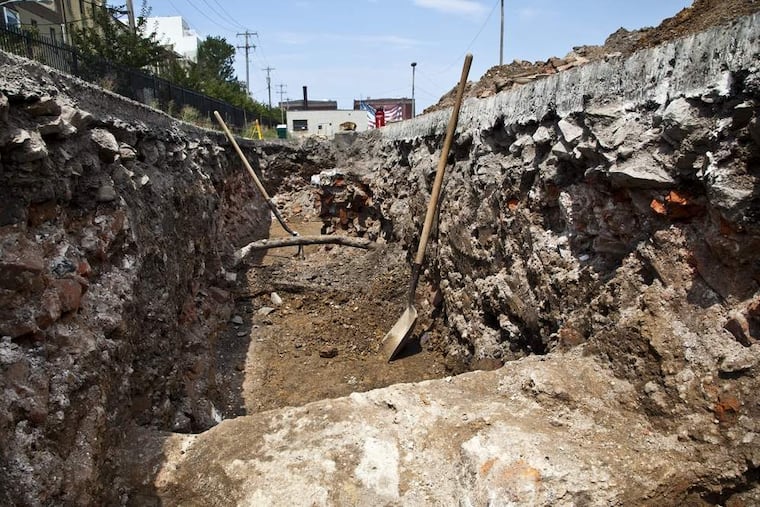What to do about Philadelphia’s buried colonial riverfront? Developer moves cautiously.
Archaeological testing will begin in about five weeks on the Columbus Blvd. site of the West Shipyard, a registered Philadelphia landmark. The developer is moving carefully, keeping the public informed of developing plans.

The Durst Organization may be one of the largest developers in New York City, but when it comes to Philadelphia, they’re newbies.
At least that’s what principal and chief development officer Alexander Durst told about 30 residents gathered at the Cherry Street Pier Thursday night to hear about what’s in store for one of the city’s most sensitive waterfront sites.
That would be a Columbus Boulevard parking lot north of Vine Street, an old Hertz rental facility. But going way, way back before it was a parking lot, this now-nondescript piece of real estate was one of the first shipbuilding yards in the city.
The West Shipyard dates to about 1688 and is so pregnant with archaeological potential that it was named to the National Register of Historic Places in 1983 and the Philadelphia register in 1987.
The land is owned by the Delaware River Waterfront Corp. (DRWC), which invited bids for development. Durst is the last developer standing after a rigorous review, said Joe Forkin, DRWC president.
Residents were expecting to hear about building plans — but the plans are still tentative and evolving, Durst said.
So, instead of talking about towers and commercial buildings, Durst and his lead archaeologist, Douglas Mooney of AECOM, an international engineering firm, sketched out the history of the site, and how Durst plans to approach addressing what may lie underground.
They are not making any of the design plans public until they have a sense of what is left of the shipyard. What is there may radically affect the what and where of any construction.
Toward that end, in about five weeks, Mooney said, a series of test excavations will be cut into the parking lot surface to provide small windows onto what may lie below. The design for any construction will be informed and in part driven by what is found during this testing phase.
The West Shipyard site potentially holds a wealth of information beneath its cracked asphalt and weeds. An archaeological probe conducted in the late 1980s uncovered a 17th century slipway — wooden tracks used for hauling ships out of the water for work on land. It’s thought to be the only such structure on the East Coast.
Archaeological excavations in 2012 uncovered great rounded timbers and other relics of early river commerce. The timbers were most likely used as fill in the marshy area along the riverfront, archaeologists said at the time. Mooney suggested they also may have been used to haul ships out of the water.
The Hertz lot and everything east to the current riverfront is built on fill piled into the river as the city grew over the centuries. Directly to the west of the site is a stretch of Water Street, which once was on the bank of the river.
Leading down from Front Street to Water Street and the West yard are early-18th century stone steps, the last remaining of the steps to the waterfront that William Penn directed to be built.
Forkin said one of the important aspects of any development would be tying those stone steps to the shipyard site “either visually or physically.”
He promised several public meetings as plans develop.
Residents seemed most concerned by the height of any buildings and the possibility for an enhanced connection to the waterfront. They also want something interesting.
“We need something that’s fun,” said Al Johnson, who lives on Water Street. “This is so boring, what you’re talking about.”